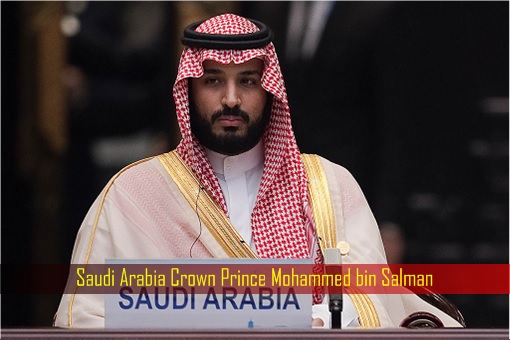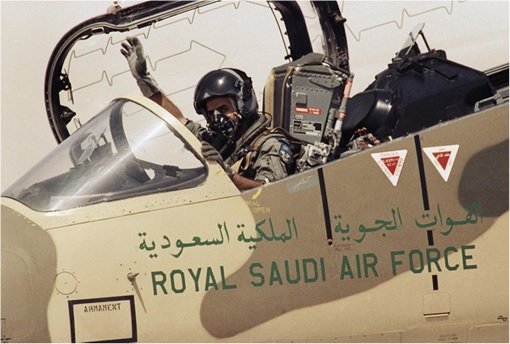Oil prices jumped more than 10% after a coordinated drone attack hit the heart of Saudi Arabia’s oil industry on Saturday (Sept 14). The attack sent Brent crude, the international benchmark for crude prices, skyrocketing 15% to US$69.02 a barrel on Monday – the biggest jump in about 30 years.
Brent crude futures actually jumped by almost 20% overnight, the biggest intraday percentage gain since the Gulf War on January 14, 1991, to a session high of US$71.95 a barrel at the opening. That’s the biggest jump in 28 years, surpassing the loss of Kuwaiti and Iraqi petroleum supply in August 1990, when President Saddam Hussein of Iraq invaded his southern neighbour.
In fact, the oil disruption on Saturday is worse than the loss of Iranian oil output in 1979 during the Islamic Revolution. All hell breaks loose when drone strikes attacked an oil processing facility at Abqaiq and the nearby Khurais oil field, knocking out 5.7 million barrels of daily crude production or 50% of the kingdom’s oil output.

At 3.31am and 3.42am on Saturday, loud explosions erupted at Khurais oilfield and Abqaiq processing facility, both owned by Saudi Aramco, the country’s state-owned oil company. The explosions set off fires and caused significant damage to the Saudi oil industry, effectively wipes off 5% of global production. But why is this attack such a big deal?
Abqaiq is the world’s largest oil processing facility, where about two-thirds of the total Saudi supply are refined and cleaned of impurities such as sulphur and sand. This is the heart of Saudi’s oil infrastructure with a processing capacity of more than 7 million barrels per day. Khurais, on the other hand, is the second largest oil field in the kingdom with a capacity to pump around 1.5 million barrels per day.
Almost instantly, Yemen’s Houthi rebels claimed responsibility for the attack, saying that 10 drones were launched in their largest attacks ever inside the kingdom. In the past years, the Houthis have been behind a series of attacks on Saudi pipelines, tankers and other infrastructure. However, President Donald Trump refuses to believe that the rebels were the real culprits.


That’s because attacks of this scale and accuracy are beyond the capabilities of the Houthi rebels. Instead, the U.S. and Saudi have squarely blamed it on Iran. Secretary of State Mike Pompeo said in his tweet – “Iran has now launched an unprecedented attack on the world’s energy supply. There is no evidence the attacks came from Yemen.”
President Trump tweeted that the White House has “reason to believe that we know” who is responsible for the oil field attacks and the U.S. is “locked and loaded depending on “verification”. Later on Monday, the U.S. president, however, said he’s in no rush to respond to the coordinated attack that hit the Saudi Arabia’s oil industry over the weekend.
Trump had used similar language in June when he announced he had called off an attack on Iran just as the US was “cocked & loaded” to strike because he decided it would cause too many deaths for a proportionate response to Tehran’s downing of a US drone. America is now a net oil exporter so its interest is well protected, hence there’s little reason to start a war over Saudi-Iran conflicts.

Donald Trump also said he was authorizing the release of oil from the Strategic Petroleum Reserve to keep the markets “well-supplied”. The president knew any U.S. military strike would push the oil price to the roof and hurt American consumers at home. The U.S. could take advantage of the situation to increase its market share in crude oil than to plunge into the Yemeni War it has little interest.
The U.S. has also produced satellite photos showing what officials said were at least 19 points of impact at two Saudi energy facilities. They argued that you can’t hit 19 targets with 10 drones. The photos show impacts consistent with the attack coming from the direction of Iran or Iraq, rather than from Yemen to the south. Iranian has rejected the accusation that Iran was behind the attack.
Similarly, Iraq denied that its territory was used for an attack on the kingdom. But the fact remains that pro-Iranian militia are well-entrenched in southern Iraq, and the Quds Force, the Iranian Revolutionary Guards unit in charge of foreign operations, has a presence there. In other words, the Iranians can attack Saudi from North (southern Iraq), South (Yemen) or East (Iran itself).

It seems Saudi Arabia has no one to blame but itself for playing with fire, and now gets burned badly. The Yemeni Civil War began in March 2015 when the then 29-year-old Prince Mohammed bin Salman, wet between the ears, but was already in his third month as Saudi Defence Minister, acted as if he was General Douglas MacArthur and decided to go to war with Yemen.
The favourite son of King Salman thought his military campaign could quickly defeat the Houthis, a Yemeni faction backed by Iran. After all, Yemen was already the Arab world’s poorest country. Prince Mohammed figured it would be impossible for the poor Yemenis to win a war against the cash-rich Saudi Arabia, a country with planeloads of most advanced military hardware from the U.S.
About 6 months before Saudi-led air campaign officially started in March 2015, the Houthis, a small, largely unheard-of Yemeni tribal group from the mountainous north, marched on the capital, Sanaa, and evicted the Yemeni government of Abdrabbuh Mansur Hadi. They had held weeks of street protests against the Hadi administration, which made cuts to fuel subsidies – an unpopular move.

From the beginning, it was a conflict between the Shia Islam (Houthis) and Sunni Islam. In order to restore the former government of Hadi, a follower of Sunni Islam, the Saudi formed a so-called grand coalition of Arab nations – Egypt, Morocco, Jordan, Sudan, Kuwait, United Arab Emirates (UAE), Qatar, and Bahrain – to fight the Houthis.
But only Saudi and UAE were the two active players in the hastily-assembled coalition. While the Saudis have fought almost entirely from the air, the Emiratis, seasoned by years of combat alongside the American military in Afghanistan and elsewhere, led virtually every ground advance in Yemen. But the Houthis have proven they are not easy meat for the Saudis.
Saudi not only could not defeat the “inferior” rebels, but the campaign has backfired spectacularly, even before the drone attacks at Khurais oilfield and Abqaiq processing facility on Saturday. What was supposed to be a few month’s campaign has dragged for more than 4 years. Houthi resistance refuses to crumble despite Saudi’s years of continuous air strikes.

The Houthis, thought to be sitting ducks by the Saudis, have retaliated and fired more than 500 missiles and sent more than 150 explosive-laden drones into the kingdom since the intervention. The biggest setback in Saudi’s campaign happened when the UAE decided to quit the war, reducing its 7,000 troops to just a few hundred, leaving Saudi trapped with a potential humiliating defeat.
On August 7, fighting broke out in Yemen’s de facto capital, the port city of Aden – between the UAE and Saudi. The Southern Transitional Council (STC), a coalition of secessionist militia forces supported by the UAE surprisingly fought the Hadi government, which is backed by Saudi Arabia. Interestingly, despite joining Saudi in the Yemeni War, the more pragmatic Emirati maintains diplomatic ties with Iran.
The US-Iran escalating tensions have forced the UAE to rethink about what looks like an “unwinnable” war in Yemen. Emirati leaders are now worried that escalating tensions with nearby Iran could spiral out of control and inflict serious damage on the UAE’s economic model, which seeks to diversify away from a reliance on oil by developing other sectors like tourism and the financial industry.

UAE is also not impressed that it gets most of the blame for the wide-scale civilian casualties, human rights violations, and devastating humanitarian crisis in Yemen, when it was the Saudi-led air campaign that is indiscriminately bombing the innocent civilians. Without Emirati foot soldiers on the ground, there’s no way the Saudi can win the war it started in 2015.
The best part is the Saudi cannot easily withdraw either, partly because of the kingdom’s 1,100-mile border with Yemen. Even the U.S. is confused with the objective now that the UAE does not want to play the game anymore. Prince Mohammed might have no choice but to negotiate a deal with the Houthis, clearly a slap in the face for the future King of Saudi Arabia.
Panicked, the inexperienced Saudi crown prince has asked for more aid from the United States, hoping for at least greater sharing of American intelligence and possibly the deployment of Special Forces teams or military advisers. But Trump has already provided logistical support and sold tons of weapons to the Saudis. It will be foolish for the U.S. to clean up the mess started by Prince Mohammed.

But the attacks on Saudi’s oil industry speak volumes about the kingdom’s air defence failures. Despite possessing both American-made Patriot and Hawk missile systems, and spent US$65 billion on arms last year, they have failed to stop a series of drone and missile attacks since May. Saturday’s strikes demonstrated how a war with Iran could be devastating for Saudi. Its defence really sucks!
Other Articles That May Interest You …
- Act Of Treason – Cousin Brothers Najib & Hishammuddin Deployed Military To “Yemeni Civil War” Without Approval
- Qatar Quits OPEC After Close To 60 Years – Here’s Why The Decision Makes Perfect Sense
- Khashoggi Confirmed “DEAD” – King Salman’s Favourite Son May Be Fired As Crown Prince After His Murder Scandal
- Saudi Crown Prince A Monster? – Journalist Khashoggi Brutally Tortured, Killed & Cut Into Pieces
- Arab VS Arab – Can’t Beat Them, So Saudi Plans To Turn Qatar Into An Island By Digging A 2.8 Billion Riyals Canal
- Exposed!! – UAE Behind Hacking Of Qatar, Mastermind Saudi Now Reduces Demands
- Arab VS Arab – The Hidden Reasons Why Saudi & Its Gang “Unfriend” Qatar
- Sponsor & Supplier – Majority Of ISIS Militants Are Citizens Of Saudi

|
|
September 17th, 2019 by financetwitter
|


|

|

|

|

|

|




























The only credible ground fighting force SA has is the Saudi National Guard. It’s an “independent” military, outside the command of Ministry of Defense. Made up mostly of Al-Saud tribe and tribes loyal to them, the National Guard is like Al-Saud family personal army. Thus like bodyguard military to Al-Saud family.
They were used in Ops Desert Storm back in the 90s but in reality, not given any big fighting role by the Coalition.
The Saudi military, thought rich in state of the art equipment, are mostly run/maintained by expats. The other Saudi tribes that form the core of the Saudi military are mostly unfit for duty. Except for the Air Force & Navy, which has some credible Saudi pilots but there are also many expats pilots, engineers, air traffic controllers, logistics, air defense (SAMs) etc. These 2 very technical force (Air Force & Navy) are heavy with expats.
Should the Saudi army ground force come face to face with Houthis, they’ll most probably run in the opposite direction. Why do you think that it was the UAE that was the ground force.